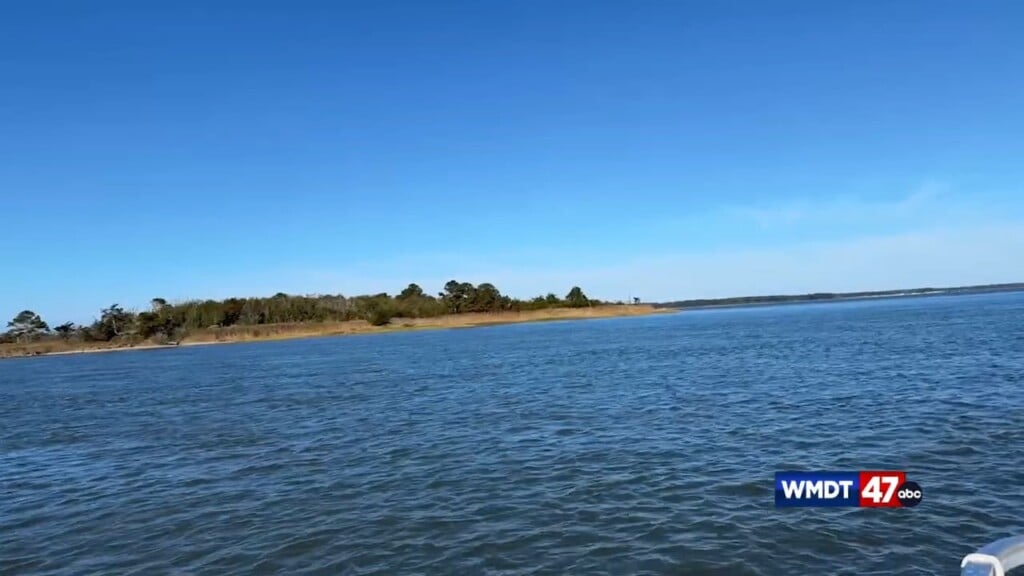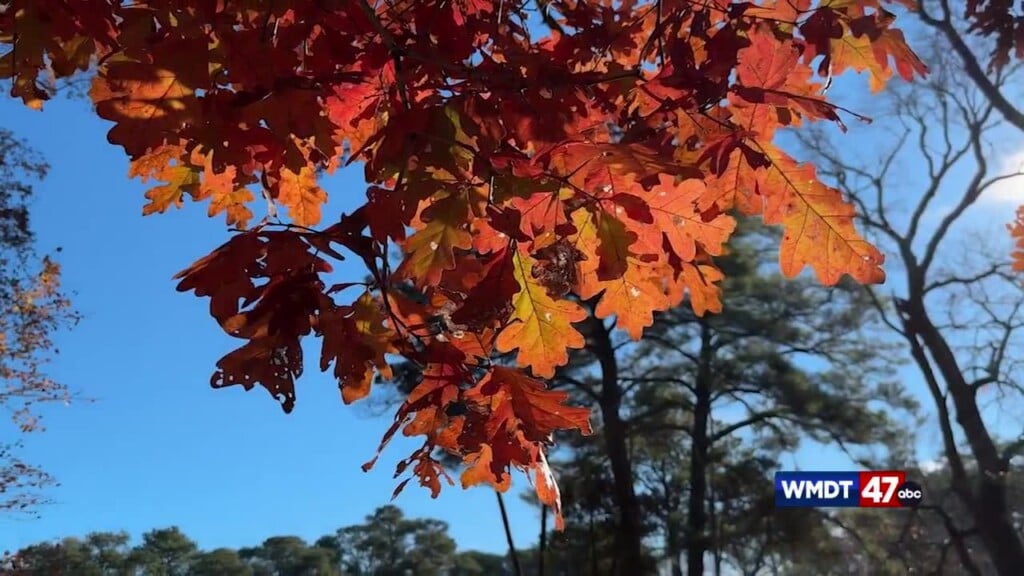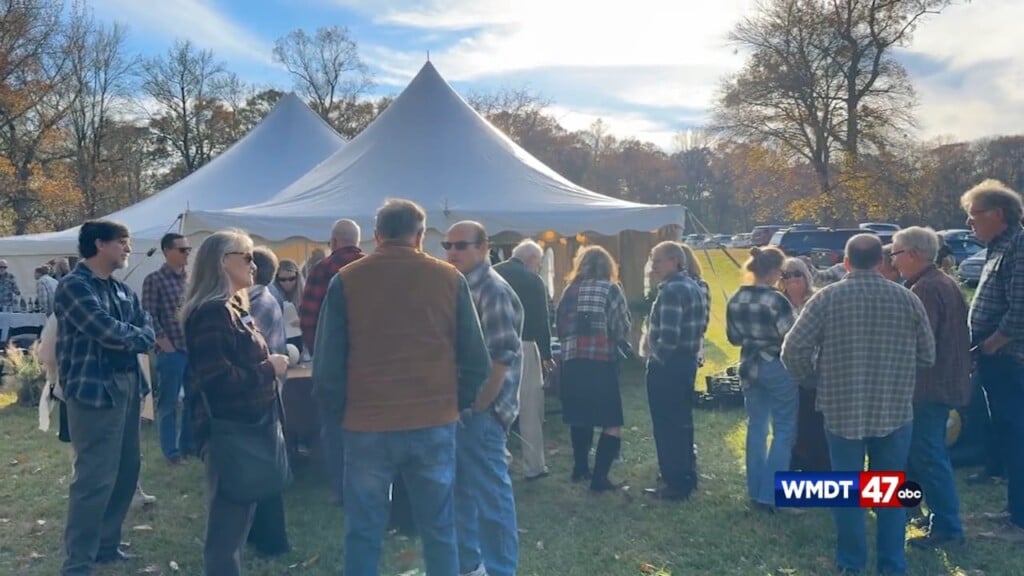Live Green: Horn Point Oyster Hatchery
CAMBRIDGE, Md – The Horn Point Oyster Hatchery is raising oysters to keep their populations afloat.
At the University of Maryland Center for Environmental Science Horn Point Oyster Hatchery, their mission is to save the oysters. The hatchery has been operating since the 90’s and their director, Stephanie Alexander, walked me through their whole operation, “When we have a spawn we lay them either on a table or put them in our rec system, and we encourage them to start releasing their gametes. This allows us to start sexing them so we can tell if it’s a male or a female by how they’re releasing their babies into the water column.” They use blue and pink clothes pins to determine which one is male and which ones female.
Next, Alexander shows me where the eggs go, “We will count all of the eggs we have collected. We will fertilize them and then we put them into our big larvae tanks. They will be swimming in our big larval tanks for the next two to three weeks.” She tells me each larval tank is about twelve feet deep, they hold ten-thousand gallons of water, and they can put up to a billion eggs in these tanks.
In the green house is where the food for the oysters stay, which is algae and phytoplankton. A PVC pipe is connected from those tanks that hold the food to the larval tanks where the oysters will eat that algae and phytoplankton. The hatchery grows different species of algae and phytoplankton, and this is where they will then be dumped in the tanks in the green house. She tells me, “They get a minimum of four feedings a day,” and “We go through about four tanks a day.”
In the hatchery, they constantly do water changes in the larval tanks because as the larvae is growing, they secrete waste. Once the larvae is big enough, they’ll grow a foot, letting Alexander know they’re ready to attach to a shell. She explains, “We grade them out from the cultures we take, put them in a little coffee filter and put them in the fridge.”
After a chilly stay in the fridge – the larvae is taken to a pier on the Choptank River. The river holds fifty-two setting tanks filled with water at just the right temperature, salt, and cleaned shell…and where larvae will attach to a shell and become spat. Alexander further explains, “Let Mother Nature feed them for a week, ten days, and then we’ll schedule a large scale deployment and that’s when this spat will be removed from the tanks, placed on a boat and then put on our planting site.”
The hatchery is a part of the big five working on their large scale sanctuary program. They have partnered with the Oyster Recovery Partnership, Maryland Department of Natural Resources, NOAA and Army Corps of Engineers.
Alexander tells me the main reason this hatchery opened was because people began to notice the rapid decline in oyster populations. She explains, “It used to be that oysters were so plentiful that you could run aground. John Smith actually ran aground on oyster reefs when he was sailing up the bay, which I can’t even contemplate. Back then nobody really knew. They just harvested and harvested and there were really no checks on it. And we got to the point after some disease episodes where mother, we just decimated the population.”
Alexander adds It wasn’t until 1994, that something was finally done about it, “The state realized we have an issue out. Oysters are declining and all the stakeholders came to the table. It was called the Maryland Round table. So water men, policymakers, environmentalists, scientists, random general public came to the same table and talked about what do we do?” Today, we still negatively impact oyster populations between over harvesting, disease and habitat loss.
Without oysters, the bay wouldn’t be healthy and neither would the local economy. Alexander points out many benefits the oysters provide to our bays, “They filter the water, cleaning it up, allowing sunlight to penetrate. They provide habitat. They are a hard substrate that many animals in the bay require as well, thanks to your barnacles and your mussels. They’re also great little nursery grounds and hiding spots for little fish and little crabs. They help with shoreline erosion because as wave energy travels over them, it tends to slow down a little bit, especially here on the Eastern Shore. They help reduce nutrients as they’re filtering and they’re also spawning and adding to the population.”
Economically, oysters also support a lot of livelihoods of the water people who are working in the water, but it’s also supporting the state of Maryland’s economy by being a food source. Oysters are also a very healthy food source – they’re filled with zinc and different vitamins.
There are different ways people can help these oysters as well. Alexander says, ” Individuals can get involved if they own waterfront property and have a peer, they can enroll in the Marylander’s Grow Researchers program where they will be given a cage with spat on shell. In it, they can grow it on their creek, which is helping to improve environmental conditions in whatever water source they are.”
For those individuals that do eat oysters, they can save their shells and recycle them. She says, “We have recycling bins are areas at certain spots around the eastern shore where they can bring their shells back, they can put them in the bin. They’ll come here and then we’ll utilize them in our process.”
This journey has been a long time coming – but they’re not giving up. “these shells behind me are just a graph, a representation of hatchery production. Through the years, one shell represents 1 million spat on shell.” She adds, “In 2022, we celebrated our 10th billion oysters going overboard.” By now, it’s probably up to 18 billion!
They will continue to push forward and get oysters overboard. To follow the oyster restoration journey, visit their website.


